Press the right key for the next slide (or swipe left)
also ...
Press the left key to go backwards (or swipe right)
Press n to toggle whether notes are shown (no equivalent if you don't have a keyboard)
Press m or double tap to see a menu of slides
Counterexamples
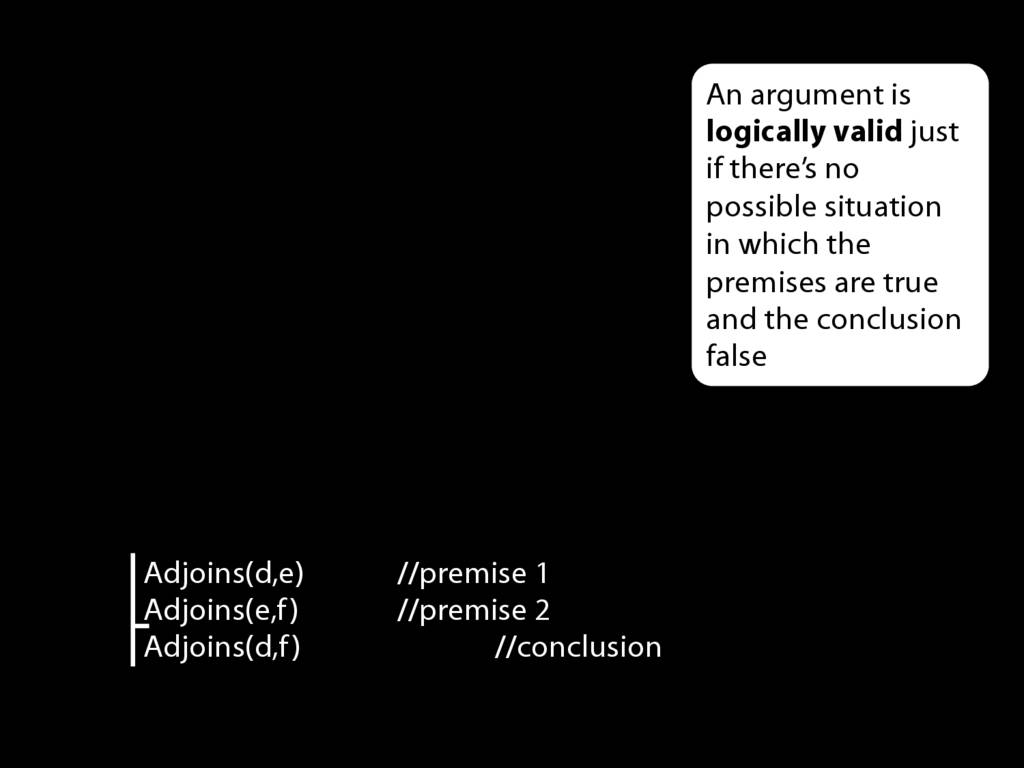
A \emph{counterexample} to an argument is a possible situation in which its premises are T and its conclusion F.
There are no counterexamples to a logically valid argument.
If an argument is not valid, then there is a counterexample to it.
To show that an argument is not logically valid, we specify a counterexample to it.
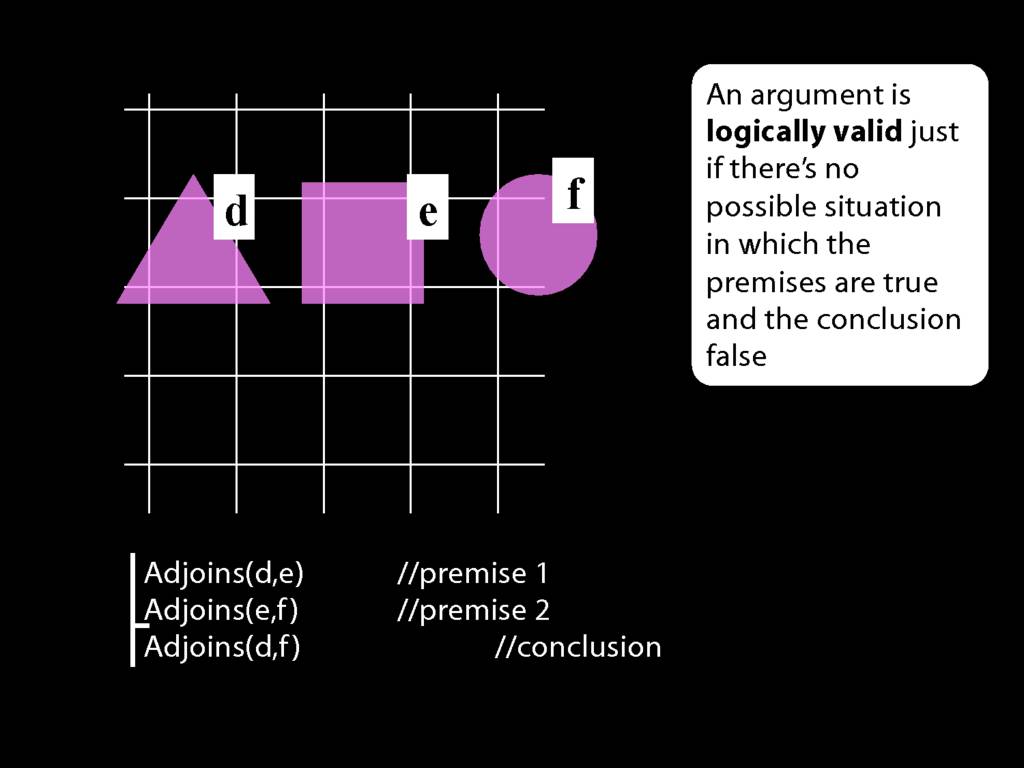
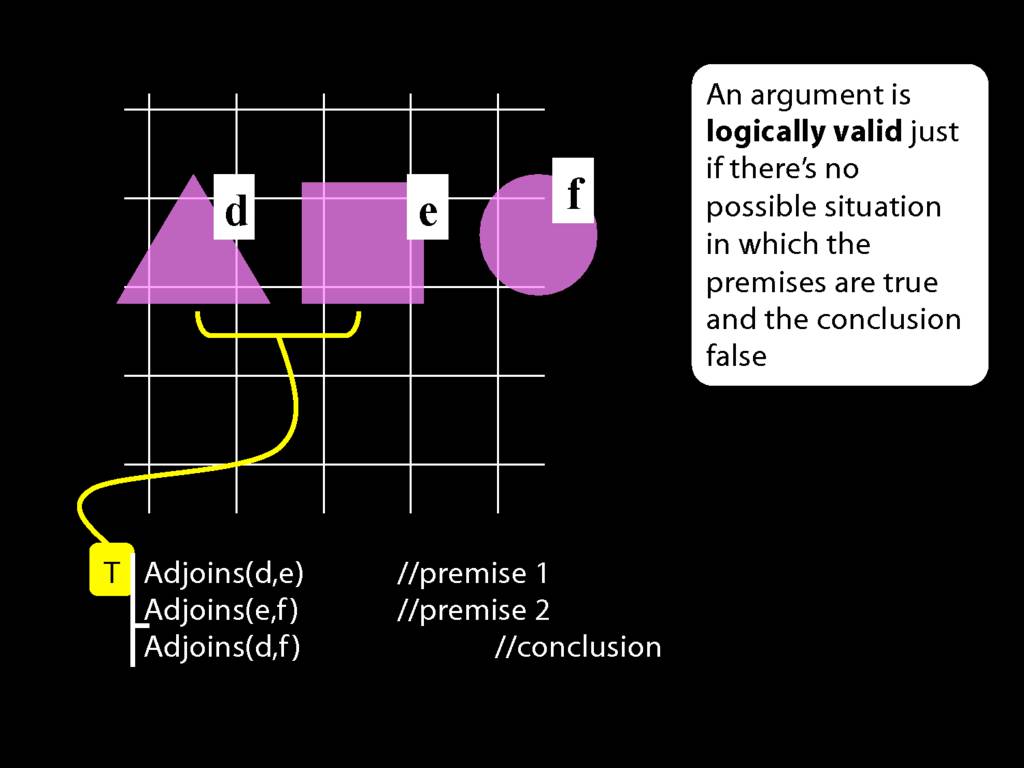
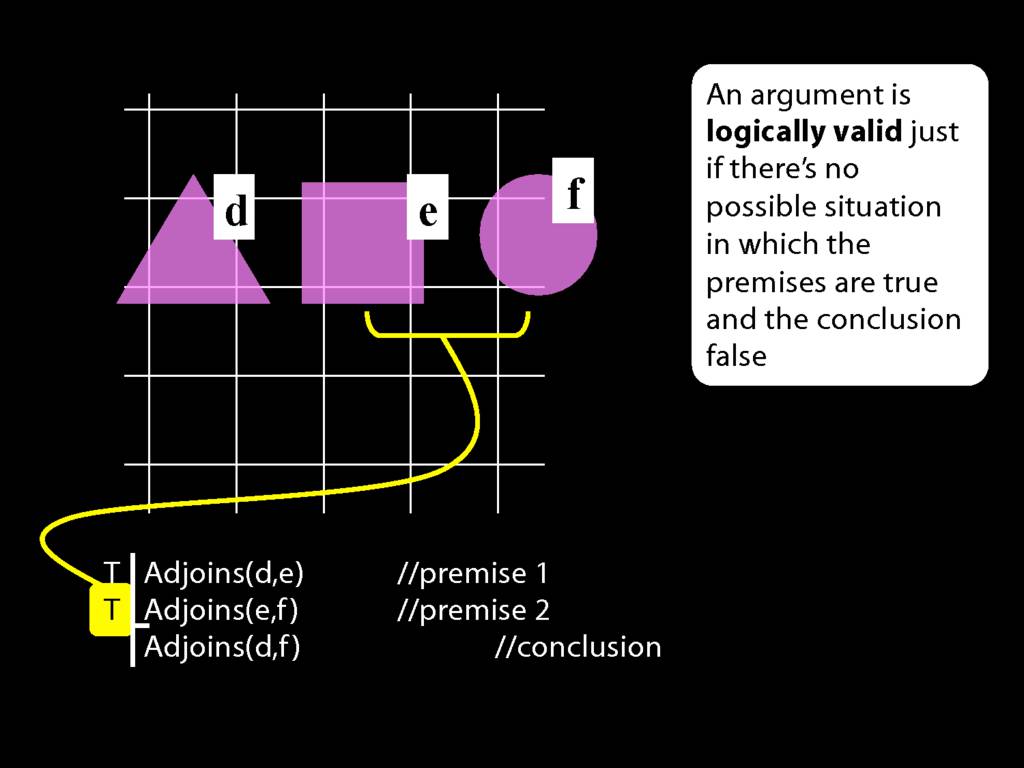
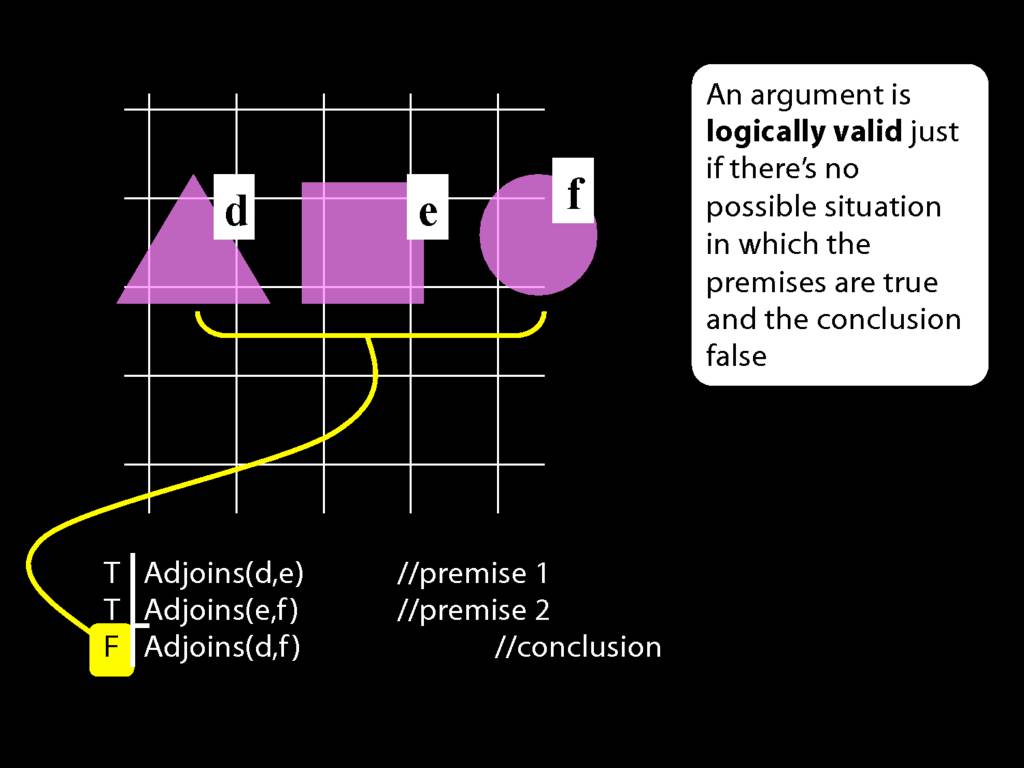
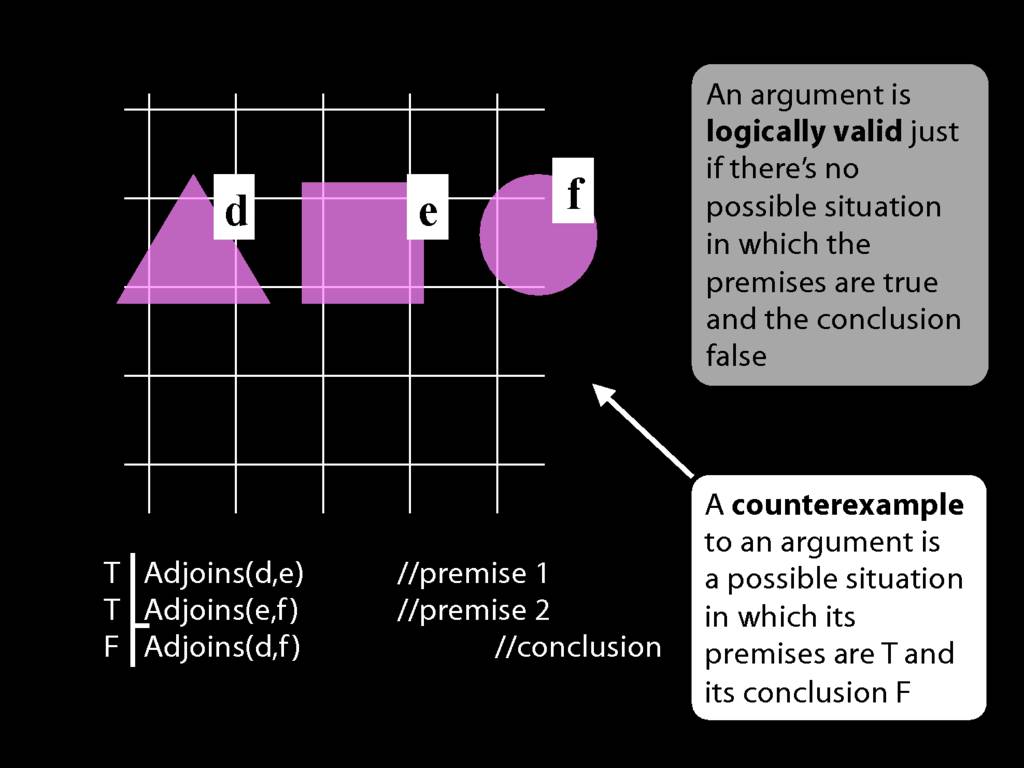
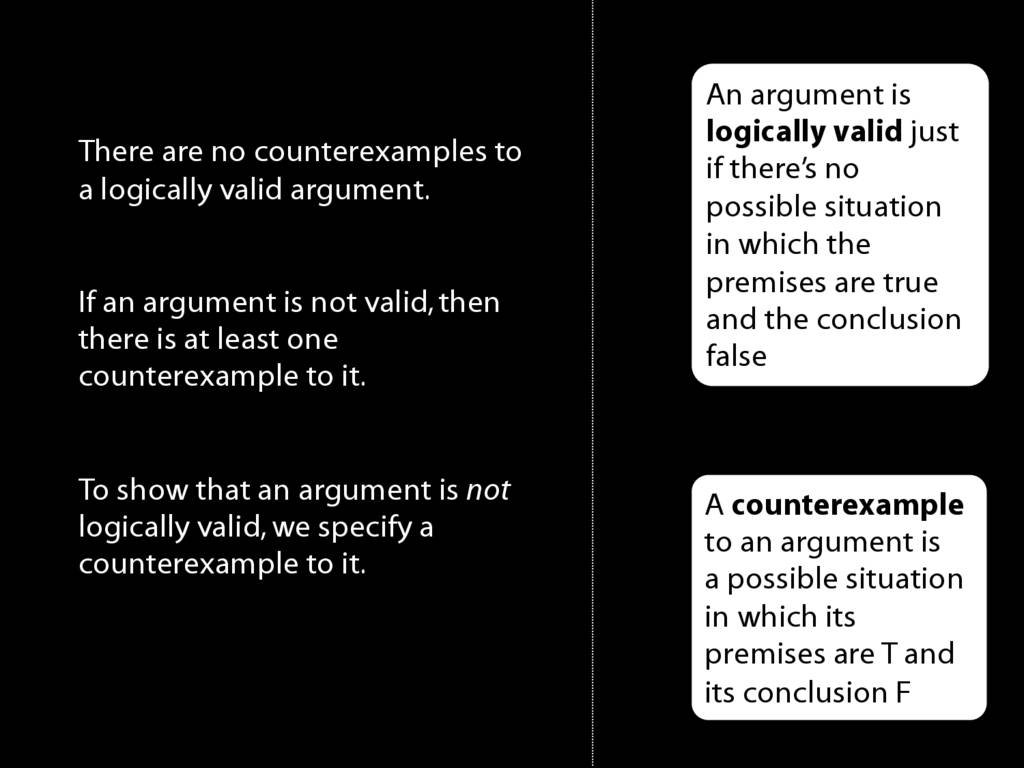
https://logic-ex.butterfill.com/ex/create/from/SameShape(a,b)/to/SameSize(a,b)
Let’s see how to create counterexamples in this in logic-ex.
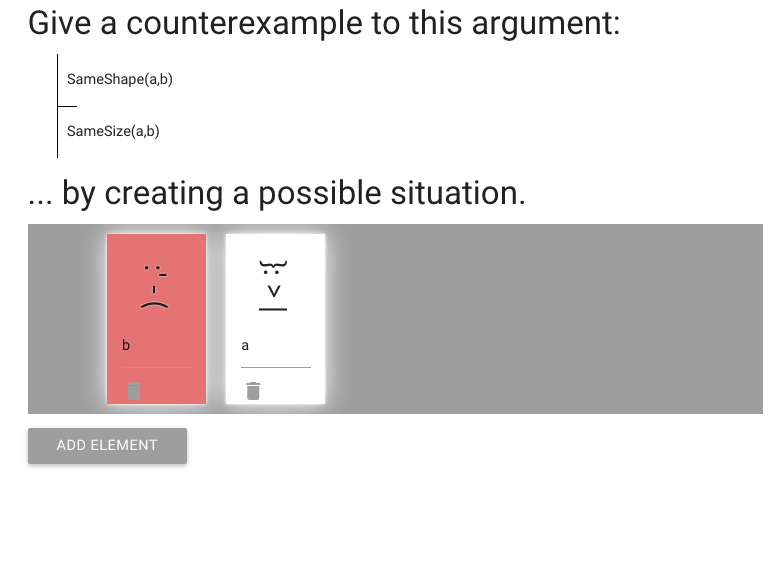
We have to create a counterexample to an argument.
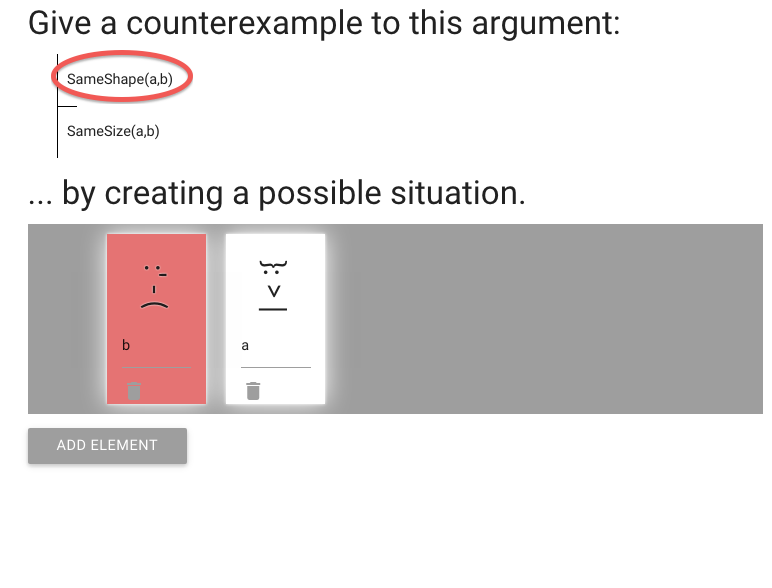
So the premise must be true ...
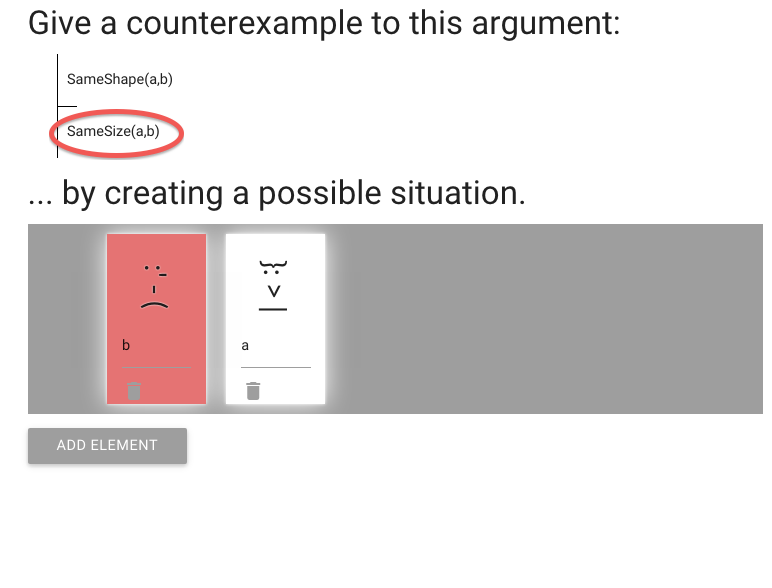
... and the conclusion must be false.
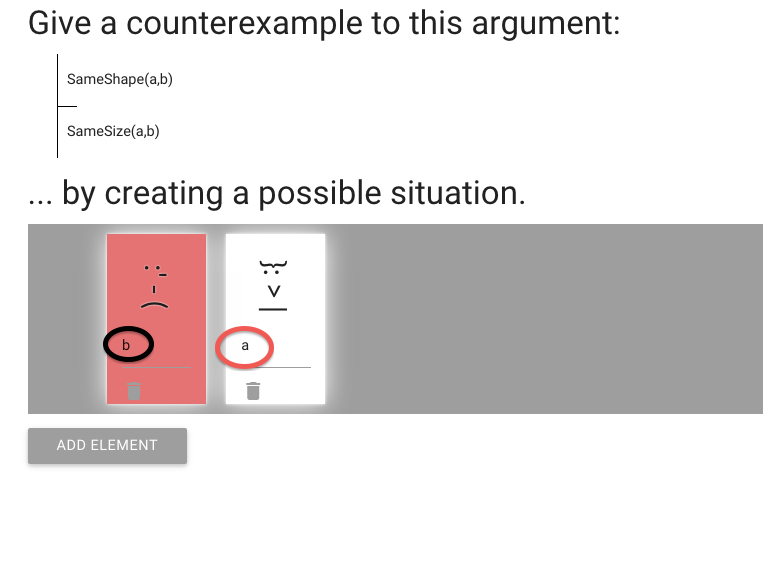
I already put the names in; without having things named ‘a’ and ‘b’
the sentences would not be true or false in our possible situation.

We need to make the conclusion false.
At the moment it’s true because a and b are the same size.
So let’s change the size of a.
Do this by dragging the corner to stretch her.

Now a is wider.

This makes the conclusion false, as we wanted.
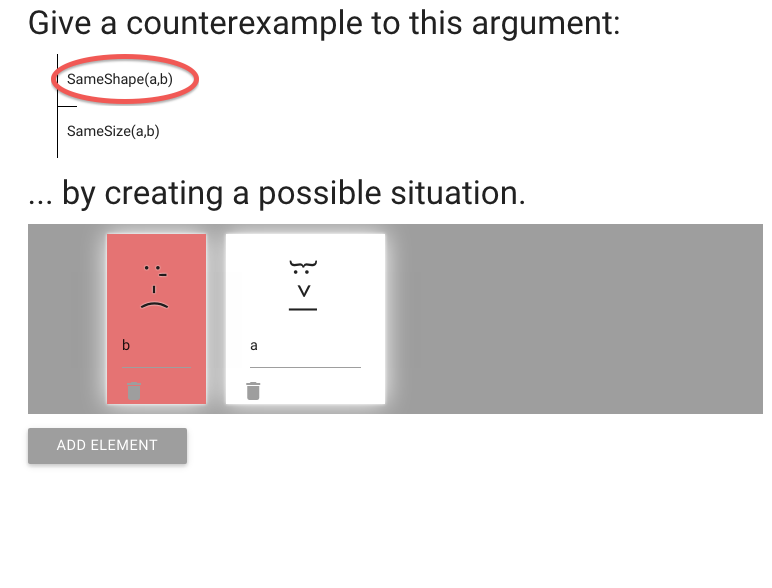
But now the premise is false too.
(This is often the problem with creating counterexamples.)
What can we do?
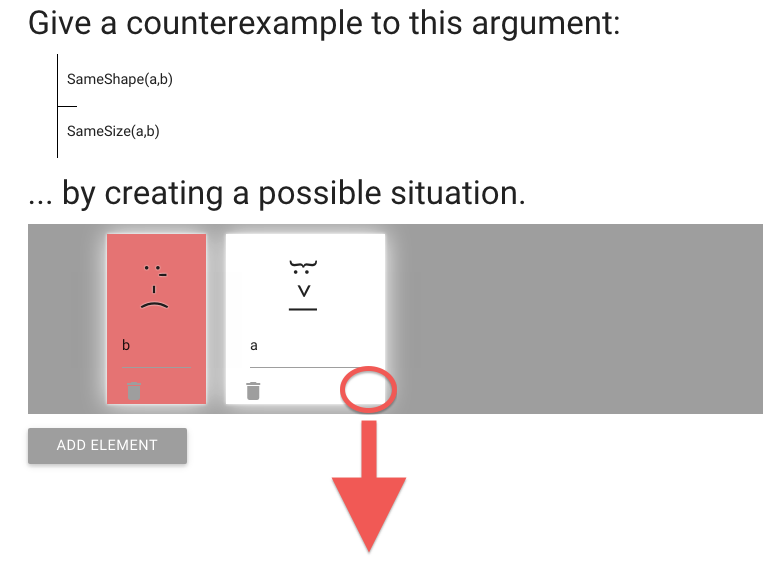
Let’s make a taller as well by stretching her down.
Do this by dragging the corner.
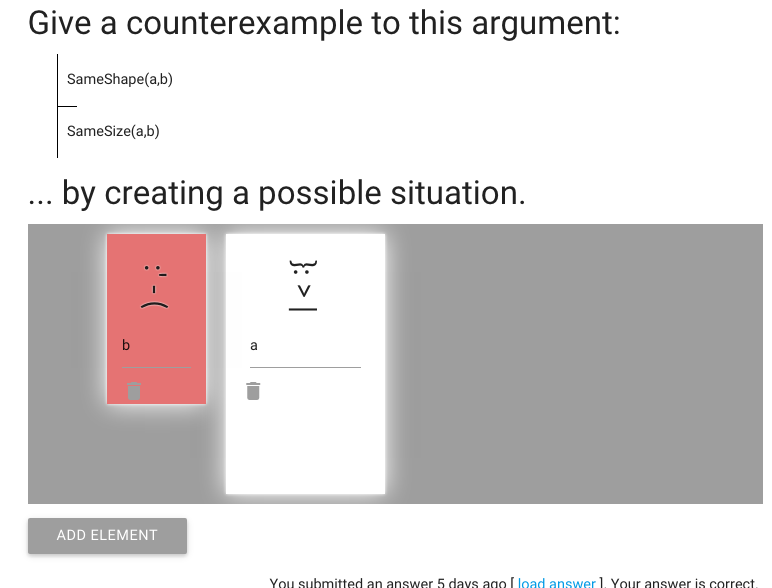
Now a is both wider and taller than b.
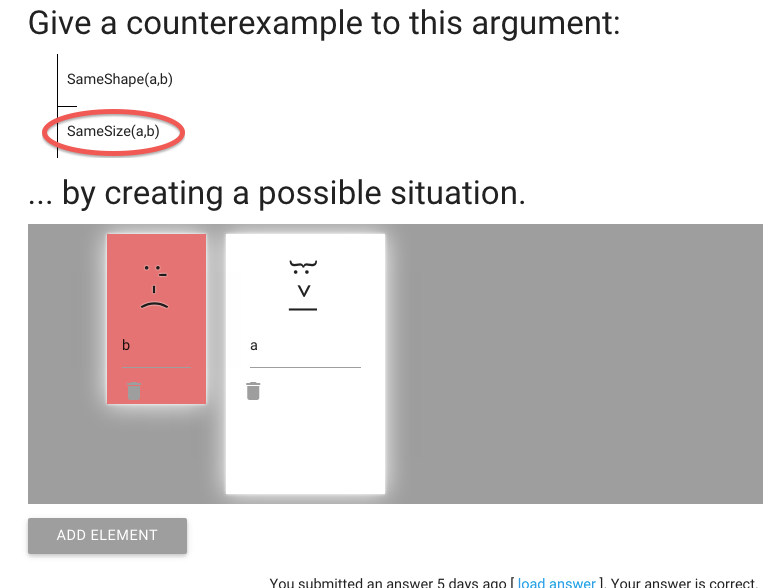
So the conclusion is still false ...
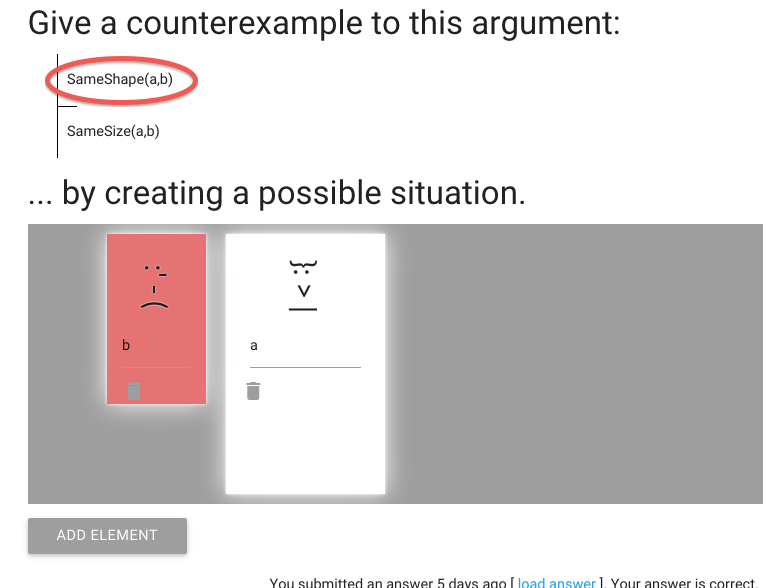
... but now the premise is true, just as we wanted.
A counterexample to an argument is a possible situation in which its premises are true and its conclusion is false.
2.8, 2.10, 2.12, 2.21
2.8, 2.10, 2.12, 2.21